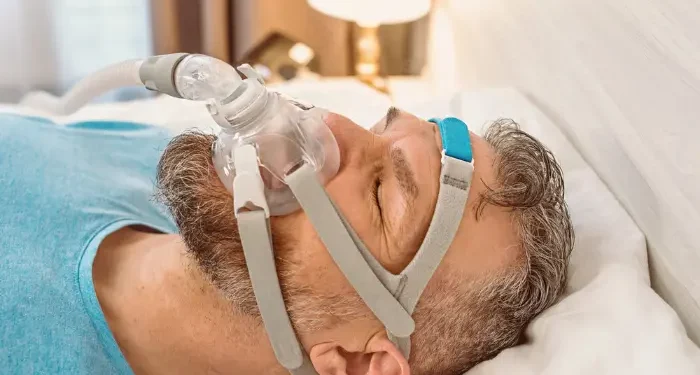Did you know that nearly 80% of adults have some sort of chronic sleep disorder? Oftentimes, these conditions are undiagnosed and untreated. If left untreated, a chronic condition can lead to much worse health outcomes. Fortunately, there are many signs that will help you determine if you might have a chronic condition that isn’t being addressed. Read on to learn more about the signs of possible sleep apnea and how to get a better night’s sleep.
What is Sleep Apnea?
Sleep apnea is a condition in which a person’s breathing repeatedly stops or is altered during sleep. This can lead to serious health issues and failure to thrive in children. However, if detected and treated early, most people with this condition can get back to normal and healthy sleep. There are two primary types of sleep apnea. Central sleep apnea is caused by a deficiency in the brain’s ability to regulate breathing. The most common type of sleep apnea is obstructive sleep apnea, in which the soft tissue in the throat causes breathing to stop. Obstructive apnea can also be a symptom of central apnea, but it is more commonly found in patients with obstructive sleep apnea.
How to Know If You Have Sleep Apnea?
If you have a family history of breathing disorders, you may be at higher risk for sleep apnea. You can also have signs of the condition if you regularly go uninterrupted periods of time without breathing. This is called a hypopnea. If you have any of the following symptoms, talk to your doctor about their potential cause and treatment: – Snoring – Snoring is one of the most common sleep apnea symptoms. It usually occurs during short, rapid breathing. Snoring can also be caused by heavy lifting, obesity, and certain medications, such as those used to treat high blood pressure. – Excessive daytime sleepiness – For many people, excessive daytime sleepiness is a sign that they are not getting enough restful sleep. – Restless sleep – If you regularly struggle to fall asleep or wake up feeling exhausted, you may be experiencing restless sleep. This can be a sign of sleep apnea.
The 3 Types of Sleep Apnea
There are three primary types of sleep apnea, each characterized by its cause and symptoms. Obstructive sleep apnea is caused by soft tissue in the throat that blocks breathing. Central sleep apnea is caused by a deficiency in the brain’s ability to regulate breathing. And mixed sleep apnea occurs when the symptoms of two types of apnea occur at the same time.
1. Obstructive Sleep Apnea
Obstructive sleep apnea occurs when the soft tissue in the throat prevents air from entering the lungs. The result is a drop in oxygen levels in the blood and arousal from sleep. It’s the most common type of apnea, affecting nearly 10 million adults. Obstructive apnea is most common in overweight men older than 60 years old and women older than 60 years old. It’s important to note that obstructive sleep apnea can cause mild to severe health problems. Patients with severe apnea often experience high blood pressure, heart disease, stroke, and diabetes. And numerous studies have linked the condition to an increased risk of obesity, depression, and substance abuse.
2. Central Sleep Apnea
Central sleep apnea occurs when the brain doesn’t receive enough instructions regarding breathing. As a result, the patient may briefly stop breathing 15 to 20 times per hour. Patients with central sleep apnea don’t feel tired and don’t have the typical signs of apnea. The disorder often occurs in individuals with severe sleep deprivation, such as shift workers, people on long-term antibiotic treatment, and those with severe anxiety. Central sleep apnea is often linked to other medical conditions such as heart disease, high blood pressure, and diabetes. It’s also linked to an increased risk of depression and substance abuse.
3. Mixed Sleep Apnea
Mixed apnea is when the symptoms of two types of apnea occur at the same time. The most common type of mixed apnea is positional apnea, in which the patient stops breathing when sleeping in an incorrect position. Patients with positional apnea are often hyperactive and restless when awake and feel fatigued when trying to sleep in the correct position. Other types of mixed apnea include transition apnea, associated with shift work, and intermittent exhalation during sleep. It’s important to note that in rare cases, sleep apnea can be caused by a condition other than any of the three types described above.
Also Read: How Physical Therapy Can Help You Manage Life With Vertigo?
How to Improve Your Sleep?
The best way to improve your sleep is to make sure that you get enough rest each night. Try to avoid caffeine, alcohol, exercise, and heavy meals close to bedtime. If you can’t fall asleep within 30 minutes of going to bed, try sleeping in. If you regularly struggle with poor or restless sleep, you may benefit from talking to your doctor about sleep apnea. Your doctor may be able to recommend lifestyle changes or medication to help improve your sleep.
Conclusion
Sleep apnea is a serious and potentially life-threatening condition that can be prevented through proper treatment. If left untreated, it can lead to serious health issues, including heart disease, depression, and diabetes. If you think you might have sleep apnea, talk to your doctor. They can help you determine if you have the condition and suggest a treatment. And it doesn’t hurt to keep a few of these signs in mind and ask your doctor if you think they apply to you.








